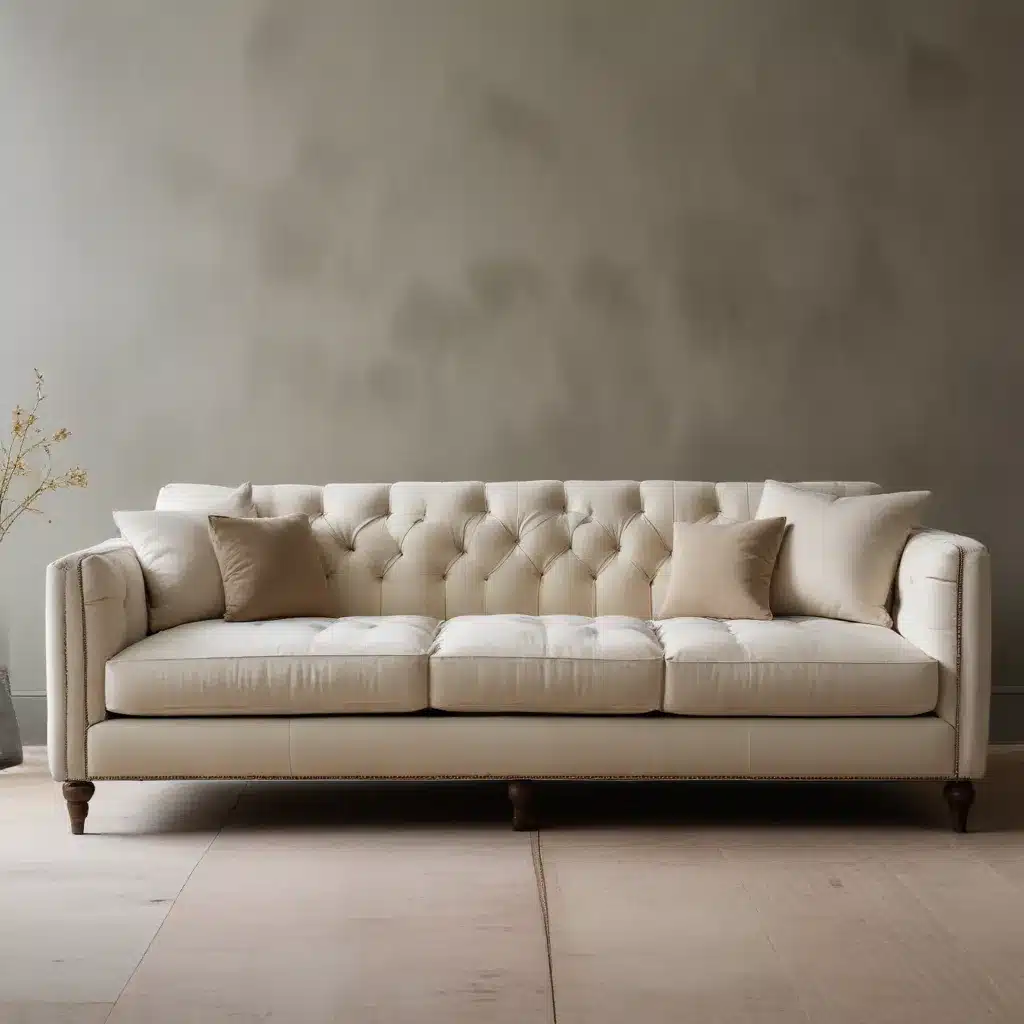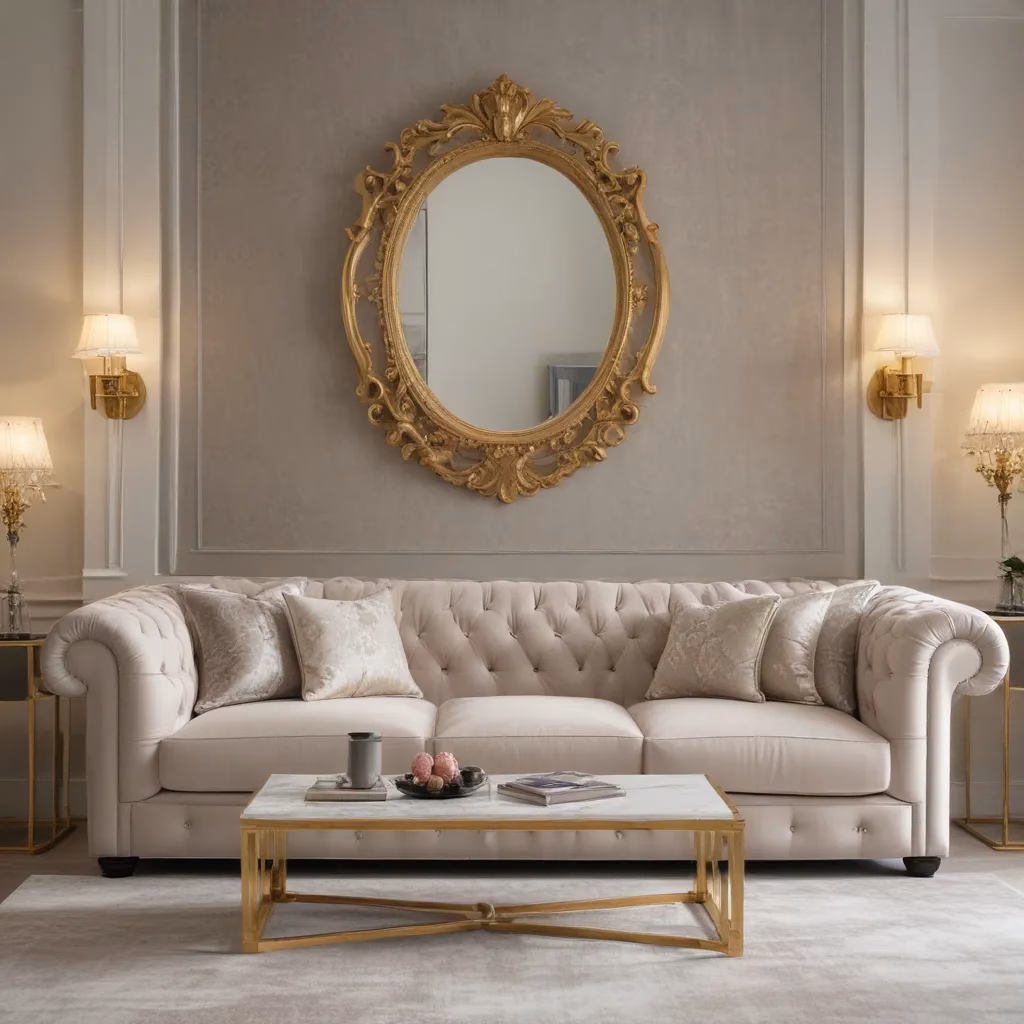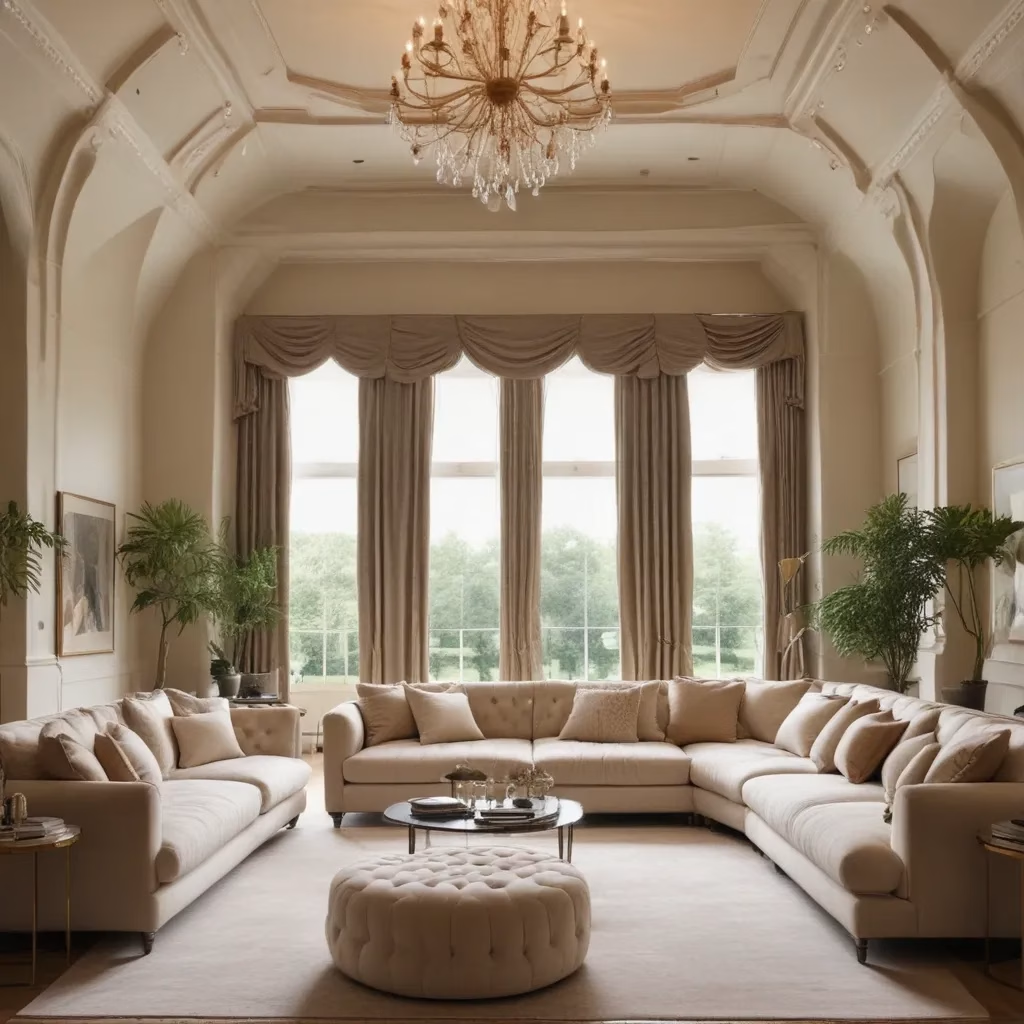
The Art of Sofa Selection
As a furniture specialist with years of experience, I’ve seen countless individuals struggle with choosing the right sofa for their homes. It’s not just about picking a comfortable place to sit; it’s about finding a piece that complements your lifestyle, fits your space, and stands the test of time. Let’s start our journey through the world of sofas by considering the key factors that should guide your decision.
First and foremost, think about how you’ll use your sofa. Are you a Netflix binger who needs ultimate comfort for those long sessions? Or perhaps you’re more of a formal entertainer who wants something stylish yet practical? Your lifestyle will significantly influence the type of sofa that’s best for you.
Next, consider your space. A sofa that looks perfect in a showroom might overwhelm your living room or leave it feeling empty. Measure your room carefully, and don’t forget to account for traffic flow. You want your sofa to be a focal point, not an obstacle course.
Lastly, but certainly not least, is durability. A high-quality sofa is an investment, and you want it to last. This is where construction and materials come into play. From the frame to the filling, each component contributes to the longevity of your sofa.
Frame Fundamentals: The Backbone of Your Sofa
The frame is the unsung hero of any sofa. It’s like the foundation of a house – you don’t see it, but it’s crucial for stability and longevity. In my years of experience, I’ve seen sofas with poorly constructed frames sag and warp within months, while well-built ones can last for decades.
Hardwood frames, particularly those made from kiln-dried oak, maple, or beech, are top-tier choices. These woods are resistant to warping and cracking, providing a solid base for your sofa. Avoid sofas with frames made from particleboard, pine, or other softwoods – they might be cheaper, but they’re a false economy.
Another aspect to consider is how the frame is joined. Look for sofas with corner blocks, dowels, or metal screws and brackets. These methods create strong, stable joints that can withstand the test of time and use. Staples, nails, or glue alone are red flags – they’re quick fixes that won’t hold up in the long run.
Remember, a good frame isn’t just about durability; it also affects comfort. A sturdy frame provides even support, preventing that uncomfortable sinking feeling when you sit down.
Suspension Systems: The Secret to Comfort
Now, let’s talk about what keeps you from feeling those hard frame edges – the suspension system. This is the network of springs, webbing, or straps that supports the cushions and distributes your weight evenly.
Eight-way hand-tied springs are often touted as the gold standard in sofa suspension. They’re comfortable, durable, and provide excellent support. However, they’re also labor-intensive to produce, which is reflected in the price.
Sinuous springs, S-shaped wires that run from front to back of the seat, are a more affordable option that can still provide good support and comfort. They’re particularly suitable for smaller or low-profile sofas where eight-way hand-tied springs might be impractical.
Web suspension, made from elastic bands stretched across the frame, is another option. While it’s the least expensive, it can be prone to sagging over time, especially in heavily used areas.
In my experience, the best suspension system depends on your specific needs and budget. A high-quality sinuous spring system can outperform a poorly executed eight-way hand-tied system, so don’t get too caught up in the hype. Focus on how the sofa feels when you sit on it.
Filling and Cushions: The Comfort Layer
With the frame and suspension sorted, let’s move on to what you’ll actually be sitting on – the cushions. The filling of your sofa cushions plays a huge role in both comfort and maintenance.
Foam is a popular choice for its affordability and low maintenance. It provides a firm seat and retains its shape well. However, lower quality foam can break down quickly, losing its resilience and comfort. Look for high-density foam for better durability.
Down is luxuriously soft and comfortable, but it requires frequent fluffing to maintain its shape. It’s also not ideal for those with allergies. A popular compromise is a foam core wrapped in down, which provides the best of both worlds – the structure of foam with the softness of down.
Polyester fiber is another option. It’s affordable and hypoallergenic, but it can flatten quickly and may not be as durable as other options.
In recent years, memory foam has made its way from mattresses to sofas. It molds to your body for personalized comfort but can retain heat, which some people find uncomfortable.
My advice? Test different cushion types in person if possible. Comfort is subjective, and what feels heavenly to one person might be too soft or too firm for another.
Upholstery: The Face of Your Sofa
The upholstery is what gives your sofa its personality. It’s also a crucial factor in durability and maintenance. Here’s a breakdown of some popular options:
| Material | Durability | Maintenance | Best For |
|---|---|---|---|
| Leather | High | Low | Long-term investment, households without pets |
| Cotton | Medium | Medium | Casual settings, easy to clean |
| Linen | Low | High | Formal settings, adults-only households |
| Microfiber | High | Low | Households with kids or pets |
| Velvet | Medium | High | Luxury look, low-traffic areas |
Leather is a classic choice. It’s durable, easy to clean, and develops a beautiful patina over time. However, it can be scratched by pets and might not be the best choice if you’re looking for a wide range of colors.
Cotton is breathable and soft, making it comfortable in all seasons. It’s also relatively easy to clean, but it can wrinkle and may not be as durable as some synthetic options.
Linen gives a relaxed, elegant look but wrinkles easily and can be difficult to clean. It’s best suited for formal living rooms or adults-only households.
Microfiber, a synthetic material, is highly durable and easy to clean, making it a great choice for households with kids or pets. However, it might not have the same luxurious feel as natural fibers.
Velvet offers a luxurious look and feel but requires more maintenance to keep it looking its best. It’s ideal for adding a touch of glamour to your space.
Remember, the best upholstery for you depends on your lifestyle, aesthetic preferences, and maintenance willingness. Don’t be swayed by looks alone – consider how the fabric will hold up to your daily life.
Sofa Styles: Finding Your Perfect Match
Now that we’ve covered the technical aspects, let’s talk about style. The style of your sofa can set the tone for your entire room. Here are some popular styles to consider:
-
Chesterfield: Known for its tufted back and arms of equal height, this classic style adds a touch of elegance to any room. It’s perfect for traditional or vintage-inspired interiors.
-
Mid-century Modern: Characterized by clean lines, tufted cushions, and tapered legs, this style is ideal for those who love a retro-modern aesthetic.
-
Lawson: With its simple, boxy shape and cushions separate from the frame, the Lawson style offers comfort and versatility. It’s a great choice for contemporary or transitional interiors.
-
Sectional: Perfect for large families or those who love to entertain, sectionals offer maximum seating and can be configured to fit your space.
-
Tuxedo: This sleek style features arms and back of the same height, creating a boxy silhouette. It’s great for modern or art deco-inspired spaces.
-
English Roll Arm: With its low arms and loose cushions, this style offers a cozy, traditional look that’s perfect for casual living rooms.
When choosing a style, consider not just your personal taste, but also the architecture of your home and your existing decor. A ultra-modern sofa might look out of place in a Victorian-era home, while a traditional Chesterfield could feel awkward in a minimalist loft.
Also, think about the longevity of the style. While it’s tempting to choose something trendy, remember that sofas are long-term investments. I always advise my clients to opt for classic styles that they’ll still love years down the line.
Color and Pattern: Making a Statement
The color and pattern of your sofa can make or break your room’s design. Here’s where many of my clients struggle – should they go bold or play it safe?
If you’re someone who likes to redecorate frequently, a neutral-colored sofa might be your best bet. Beiges, greys, and whites provide a versatile base that can adapt to changing design schemes. Plus, you can always add pops of color with throw pillows and blankets.
On the other hand, if you’re confident in your style and want your sofa to be a statement piece, don’t be afraid of color or pattern. A rich jewel-toned velvet or a striking geometric print can become the focal point of your room.
When choosing a color, consider the mood you want to create. Cool blues and greens can make a space feel calm and serene, while warm reds and oranges add energy and coziness.
If you do opt for a patterned sofa, remember that larger patterns tend to be more timeless than small, busy ones. Also, consider the scale of the pattern in relation to your room size – a large pattern can overwhelm a small space, while a small pattern might get lost in a larger room.
Sofa Care and Maintenance: Keeping Your Investment Looking Great
Once you’ve found your perfect sofa, you’ll want to keep it looking its best for years to come. Here are some tips I always share with my clients:
-
Regular cleaning: Vacuum your sofa weekly to remove dust and debris. For fabric sofas, use the upholstery attachment to avoid damaging the material.
-
Spot cleaning: Address spills immediately to prevent staining. Blot (don’t rub) the spill with a clean, white cloth. For tougher stains, use a cleaner appropriate for your sofa’s material.
-
Rotation: Rotate and flip cushions regularly to ensure even wear. This is especially important for down-filled cushions, which can lose their shape over time.
-
Protection: Consider using arm covers or throws in high-use areas to protect against wear and tear. If your sofa is in direct sunlight, use curtains or blinds to prevent fading.
-
Professional cleaning: Depending on usage, have your sofa professionally cleaned every 12-24 months. This deep clean can help extend the life of your sofa.
-
Avoid eating on the sofa: I know it’s tempting, but try to keep food and drinks away from your sofa to prevent spills and stains.
-
Pet protection: If you have pets, consider using a throw or slipcover to protect your sofa. Regular brushing of your pets can also help reduce the amount of hair that ends up on your furniture.
Remember, different materials require different care. Leather sofas need regular conditioning to prevent cracking, while velvet might require a special brush to maintain its pile. Always check the manufacturer’s care instructions before using any cleaning products on your sofa.
The Importance of Trying Before Buying
I can’t stress enough how important it is to test a sofa before you buy it. While online shopping has made furniture buying more convenient, nothing beats sitting on a sofa to gauge its comfort and quality.
When you’re in the showroom, don’t be shy – really put the sofa through its paces. Sit how you would at home. If you like to lounge, stretch out. If you often sit for long periods, stay seated for at least 15 minutes to see how it feels.
Check the depth of the seat – your feet should touch the floor comfortably when you’re sitting back. The height of the back and arms should provide adequate support. If you’re tall, make sure the sofa is deep enough to support your legs comfortably.
Also, pay attention to any squeaks or creaks as you sit down and get up. These could be signs of poor construction.
If possible, bring along the other decision-makers in your household. What’s comfortable for one person might not work for another, so it’s important to get everyone’s input.
Making the Final Decision
Choosing a sofa is a significant decision, and it’s normal to feel a bit overwhelmed. Here’s a quick checklist to help you make your final choice:
- Does it fit your space, both in terms of size and style?
- Is it comfortable for everyone who’ll be using it?
- Does the construction quality justify the price?
- Is the upholstery suitable for your lifestyle?
- Do you love it enough to live with it for the next 7-15 years?
If you can answer yes to all these questions, you’ve likely found your perfect sofa.
Remember, a good sofa is an investment in your home and your comfort. While it might be tempting to go for a cheaper option, investing in quality now can save you money and hassle in the long run.
As you embark on your sofa-buying journey, don’t hesitate to seek expert advice. At Sofa Spectacular, we’re always happy to help you navigate the world of sofas and find the perfect piece for your home. Happy sofa shopping!



